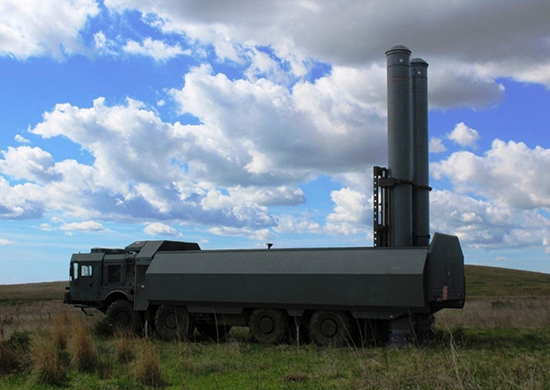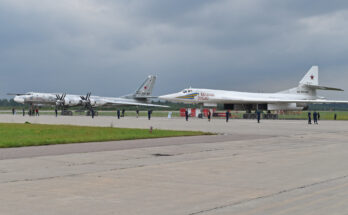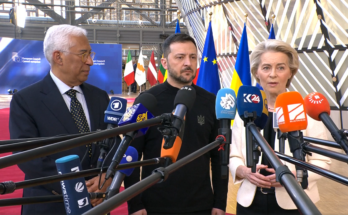
Throughout the first three months of the year, Russia has used its new 3M22 Tsirkon anti-ship cruise missile five times to perform ground strikes on Ukraine’s capital Kyiv, the city’s administration said in a statement on social media on April 1. Tsirkon is one of six missile types Russia has used to hit Kyiv, according to the statement, with the Kh-101 air-launched missile being the most frequently-used platform.
While Tsirkon strikes had been rumored previously, concrete evidence began emerging earlier this year. The Kyiv Scientific Research Institute of Forensic Expertise said that the wreckage of two missiles shot down overnight on February 7 were consistent with the Tsirkon. Later in February, Russian President Vladimir Putin confirmed the weapon’s usage, stating simply, “The Tsirkon sea-launched hypersonic strike system has already been used in combat.” Another pair of Tsirkons was apparently shot down on March 25 around Kyiv.
As one of Russia’s newest weapons – and particularly given Russian claims of the missile’s invulnerability to modern air-defenses – its usage and shoot-down in Ukraine has drawn a significant amount of attention. One interesting question associated with the weapon’s combat deployment is identifying what launcher it has been fired from.
Russia intends for the Tsirkon to be one of the Navy’s primary anti-ship weapons, next to the 3M14/3M54 Kalibr and 3M55 Oniks. The universal vertical-launch system (VLS) 3S14 should be capable of firing all three. But while Tsirkon has been formally adopted into service with the Russian military, it is still only available in a limited capacity, with only a few warships known to operate it.
Publicly, Russia has acknowledged conducting sea-based Tsirkon launches from the Admiral Gorshkov, a Pr.22350 frigate active in the Northern Fleet, and the Pr.885 Severodvinsk submarine over the last few years, as part of the missile’s testing program. The stated range of the missile – 1,000 kilometers – makes it unlikely that either would have been the source for strikes on Ukraine. Admiral Golovko, another Tsirkon-carrying Pr.22350 frigate, was commissioned several months ago, but also into the Northern Fleet.
Several vessels in the Black Sea Fleet do presently have 3S14 launchers, meaning in theory they can conduct Tsirkon launches, but likely not without being modernized first or receiving specifically-modified Tsirkon missiles. The 3S14 VLS onboard the fleet’s Pr.11356 frigates and Pr.21631 missile boats, for example, are apparently capable of firing Kalibr cruise missiles, but neither the Oniks nor Tsirkon. The Pr.20380 corvette Merkury, commissioned into the Black Sea Fleet last year, is newer and may be capable of firing Tsirkon, but is deployed for now in the Mediterranean.
Perhaps more realistically, Russia has conducted these strikes using ground-based launchers adapted to fire the Tsirkon. Work on the ground-based version has been ongoing for several years; Putin briefly mentioned the project in December 2019, stating only that development was underway. In this role, the ground-based Tsirkon launcher would complement or replace the K-300 Bastion coastal defense complex, which presently carries Oniks and Kalibr cruise missiles.
The ground-based Tsirkon launcher could even be a modified Bastion complex, given previous reports suggesting the missile’s compatibility with the Bastion. In November 2022, Russian state media TASS cited various sources in Russia’s military establishment as stating that a prototype Tsirkon ground-based launcher had been built and, like Bastion, would carry two missiles. Moreover, Bastion itself has been used to carry out ground strikes in Ukraine, according to a TASS report in June 2023. The U.K. Ministry of Defence, in a public assessment on February 14, called it ‘likely’ that the Bastion had been adapted to conduct Tsirkon strikes.
On March 29, Ukrainian Air Force spokesman Maj. Illia Yevlash stated Russia had deployed the missiles to Crimea, enabling strikes against Kyiv as well as other major population centers, like Odesa. Russia’s deployment of the Tsirkon as part of the war effort demonstrates the weapon as mature enough to employ in combat, though likely only small numbers have been manufactured thus far, if the (admittedly limited) data for the last few months of strikes is accurate. The missile is challenging for air-defenses to intercept, but evidently not impossible to destroy.
Military markets analyst, covering Eurasia, Middle East, and Africa.




